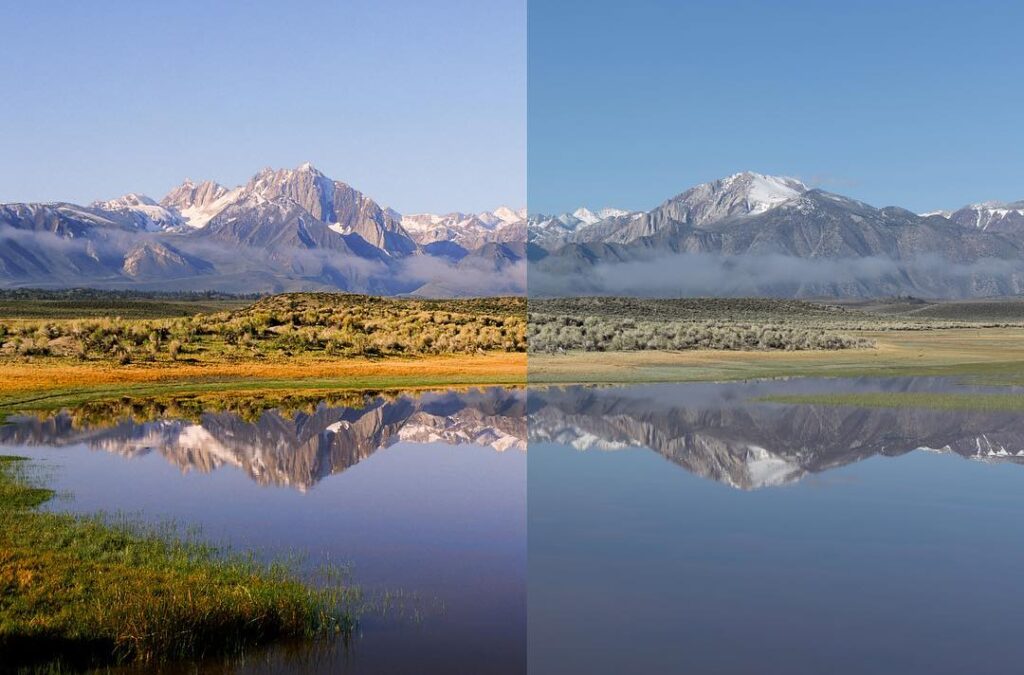Why Do Cameras Look Better Than Real Life – Why Photos Are More Stunning!
Cameras enhance images with HDR, post-processing, color saturation, depth of field, and high resolution, making photos more vibrant.
In this article, we explore why cameras capture images that appear more vibrant, sharper, and aesthetically pleasing than real life.
Higher Dynamic Range (HDR):

HDR is a powerful tool in photography that allows cameras to capture a broader range of light and dark areas in an image. This leads to more vibrant, balanced, and detailed photos. Here’s why HDR is important:
- Captures Extreme Lighting: HDR enables cameras to handle both the brightest highlights and the darkest shadows in a scene. The human eye struggles to see both extremes at once, but HDR allows for a more detailed, well-balanced image.
- Multiple Exposures: Cameras with HDR technology often take multiple photos at different exposure levels and combine them to create one image that shows details across all lighting conditions.
- Enhanced Details: HDR helps reveal details that would otherwise be lost in overly bright or dark areas, giving photos more depth and dimension.
- Better Contrast: It reduces harsh lighting contrasts, creating smoother transitions between light and dark areas, which makes photos look more natural and aesthetically pleasing.
- Vibrant and Lifelike Colors: HDR increases color vibrancy by balancing light in both shaded and illuminated areas, making the colors appear richer and more vivid.
- Improved Indoor and Outdoor Shots: Whether you’re capturing a sunset, an indoor portrait, or a landscape with a bright sky, HDR helps ensure that both foreground and background are properly exposed and detailed.
- Better Viewing Experience: HDR images appear more lifelike and visually captivating, offering a higher level of realism that enhances the overall viewing experience.
Post-Processing Magic:
Post-processing refers to the edits and adjustments made to a photo or video after it has been captured. Many modern cameras, especially smartphones and high-end digital cameras, use post-processing algorithms to automatically enhance images. Here’s why it plays a crucial role in improving the quality of your photos:
- Automatic Enhancements: Most cameras apply automatic adjustments to sharpen details, brighten images, and improve color balance, even before you view the image. These changes make photos look polished and more visually appealing.
- Adjusting Contrast and Saturation: Post-processing algorithms boost contrast and saturation, making colors pop and ensuring the image looks vibrant and engaging. This enhancement makes the photo more striking than what we naturally see with our eyes.
- Sharpening Details: Cameras can enhance the sharpness of fine details, making textures like skin, fabric, or nature’s elements stand out with crisp clarity that often exceeds what we observe in real life.
- Noise Reduction: Post-processing can also remove unwanted noise (graininess) that often appears in low-light conditions, making images smoother and cleaner, enhancing overall image quality.
- Correcting Imperfections: The camera’s software often detects and corrects imperfections like lens distortions, overexposure, or uneven lighting, resulting in more balanced, polished images.
- Custom Filters: Many cameras or apps offer built-in filters that stylize photos with specific color tones, enhancing the mood and overall aesthetic of an image. These filters can give the photo a professional and artistic look.
- Improved Aesthetic: Even if you’re not a professional photographer, the automatic post-processing in your camera can give your photos a more professional and visually pleasing outcome, making them appear more attractive and well-composed.
Resolution and Detail:
Resolution refers to the level of detail an image contains, which directly impacts how sharp and clear it appears. High-resolution cameras can capture minute details that are often not noticeable to the naked eye in real life. Here’s why resolution plays such an important role in making photos look better:
- Sharper Images: Higher resolution means more pixels in an image, allowing for greater clarity. When you zoom in on a high-resolution photo, details remain crisp and sharp, whereas low-resolution images tend to become blurry or pixelated.
- Capturing Fine Details: High-resolution cameras can pick up even the smallest textures and fine details that the human eye might miss, such as intricate patterns in fabric or the texture of a leaf. This results in more visually interesting and richer photos.
- Better Quality at Large Sizes: With higher resolution, images can be enlarged without losing quality. This makes high-res photos perfect for printing large formats, such as posters or billboards, where fine details are crucial.
- More Data for Editing: A higher-resolution image contains more data, providing greater flexibility during post-processing. Editors can adjust lighting, colors, and sharpness without significantly reducing image quality, which would be more noticeable in lower-resolution photos.
- High-Resolution Video: In videos, higher resolution (like 4K) ensures that even the smallest movements or details are captured clearly, contributing to a more cinematic and lifelike viewing experience.
- Enhanced Perception of Texture: With more pixels, you can capture finer textures, such as skin details in portraits or the grains in wood. This makes subjects appear more lifelike and realistic in photos.
- Visual Richness: High-resolution images have greater visual richness because they contain more color and tonal information, allowing for more nuanced and detailed visual experiences.
FAQ’s
1. Why do cameras look better than real life?
Cameras enhance images through HDR, post-processing, color saturation, high resolution, and lens effects, creating more vibrant, detailed, and aesthetically pleasing photos.
2. What is HDR in photography?
HDR (High Dynamic Range) allows cameras to capture a wider range of light and dark areas, balancing extreme lighting contrasts and enhancing image vibrancy.
3. How does post-processing improve photos?
Post-processing adjusts contrast, saturation, sharpness, and removes imperfections, making photos more polished, vibrant, and visually appealing.
4. Why is high resolution important in photography?
High resolution captures more detail, resulting in sharper images with fine textures and clarity, even when zoomed in or enlarged.
5. What role do lenses play in making photos look better?
Lenses manipulate perspective, depth, and focus, creating dramatic effects like blurred backgrounds and sharper subjects, enhancing the overall image.
Conclusion
Cameras look better than real life due to their technical capabilities, including HDR, post-processing, specialized lenses, and controlled lighting. These features enhance colors, sharpen focus, and create more visually appealing images that the human eye can’t naturally perceive. By understanding these factors, photographers can capture images that exceed what we see in everyday life.







